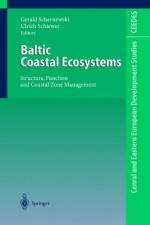|
This section contains 1,300 words (approx. 5 pages at 300 words per page) |

|
An ecosystem is an interacting community of organisms and their non-living physical environment occupying a certain place and time. Coastal ecosystems occupy the margins of the land and the sea. There are many different types: salt marshes, mangrove swamps, sand dunes, seagrass meadows, coral reefs, kelp forests, tidal flats, rocky intertidal, maritime forests, and coastal heathlands. All are heavily influenced by some combination of saltwater, ocean waves, currents, and ocean breezes, though not necessarily all of these.
Components of Coastal Ecosystems
The major interactions of organisms and their environment in coastal ecosystems include energy transfer and cycling of materials. These involve several functional groups of organisms. Plants and algae are the major primary producers, that is, organisms that produce their own food through the process of photosynthesis. They use the energy from the sun and the nutrients washed down to the coast from the surrounding land...
|
This section contains 1,300 words (approx. 5 pages at 300 words per page) |

|


